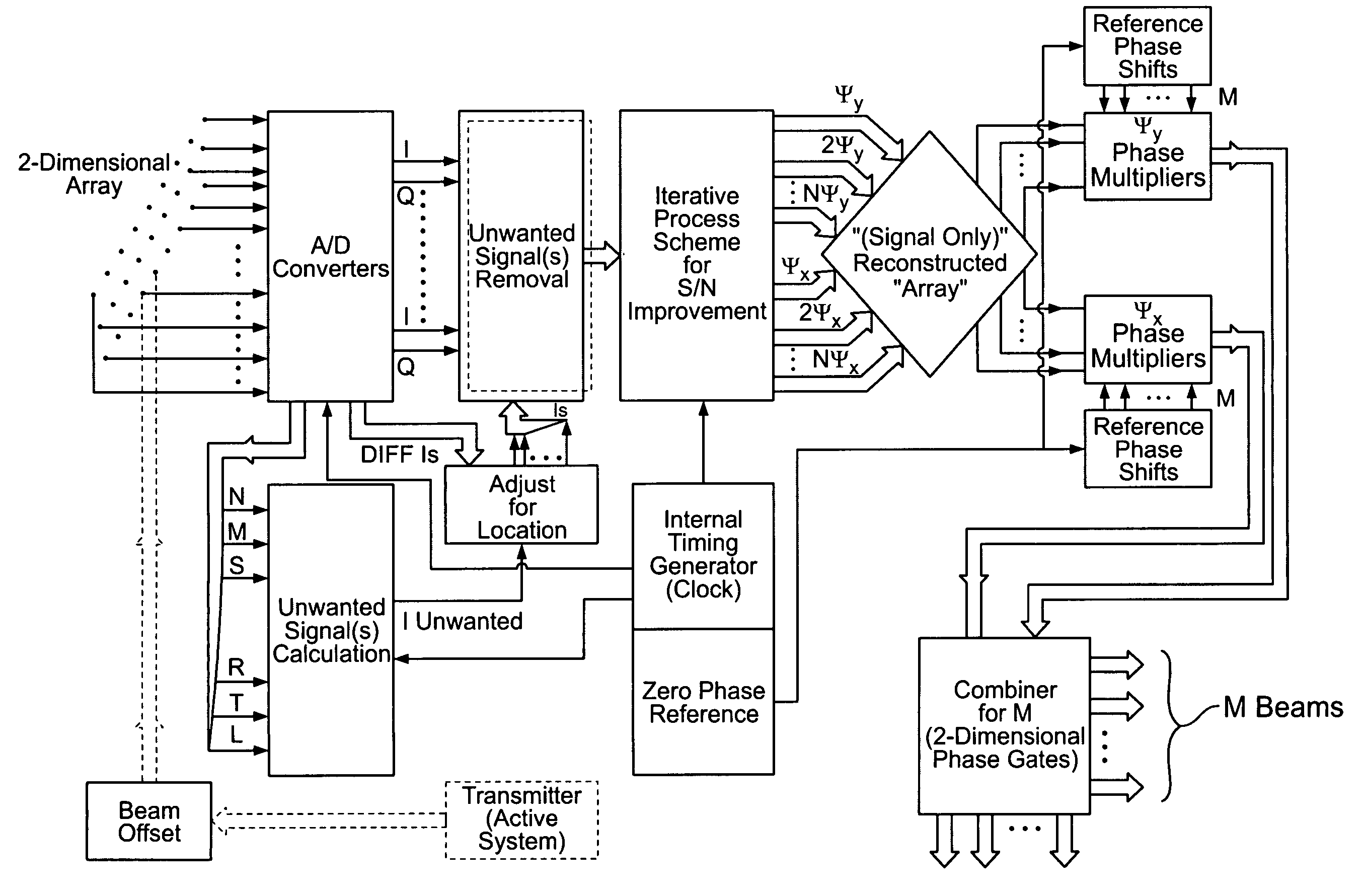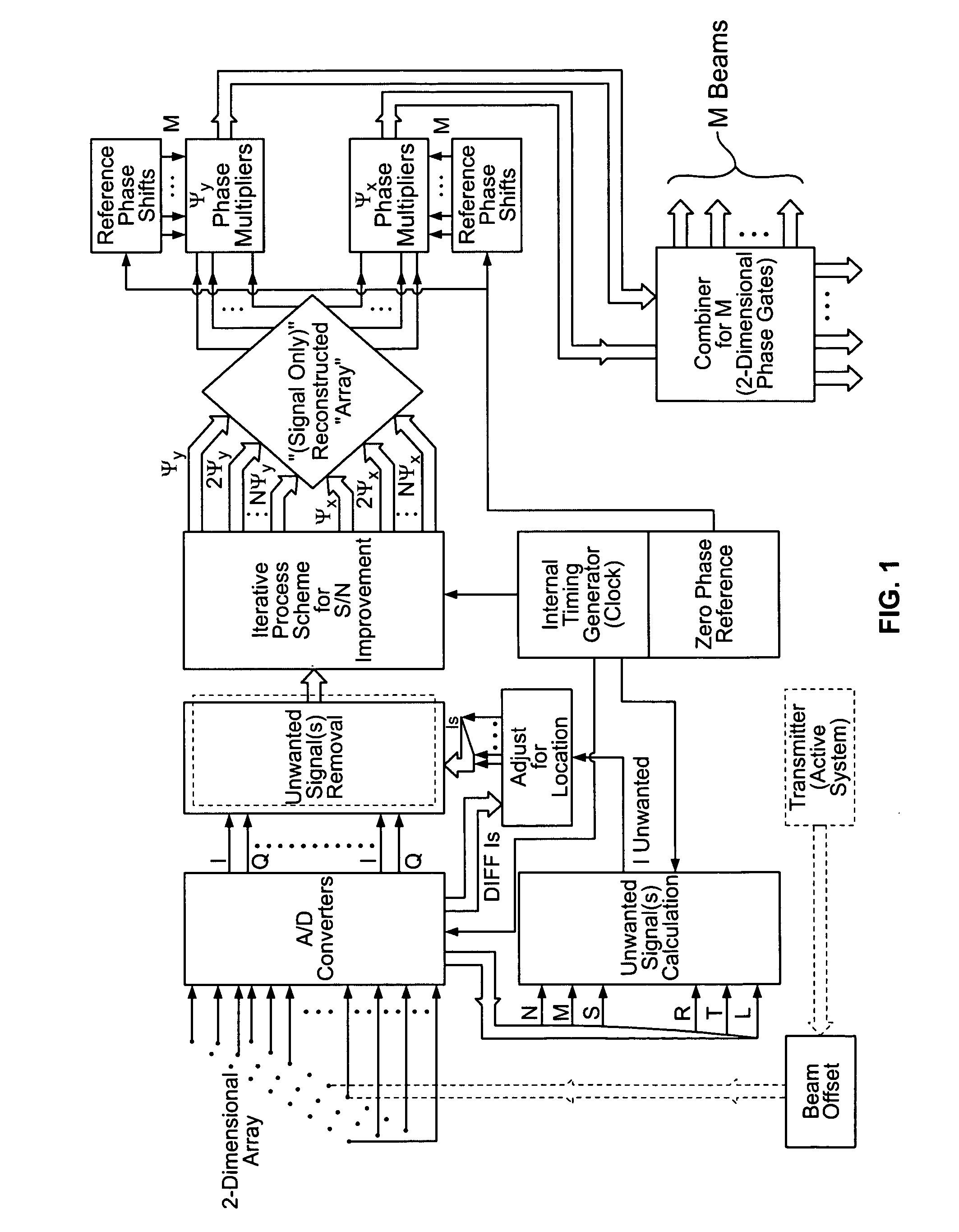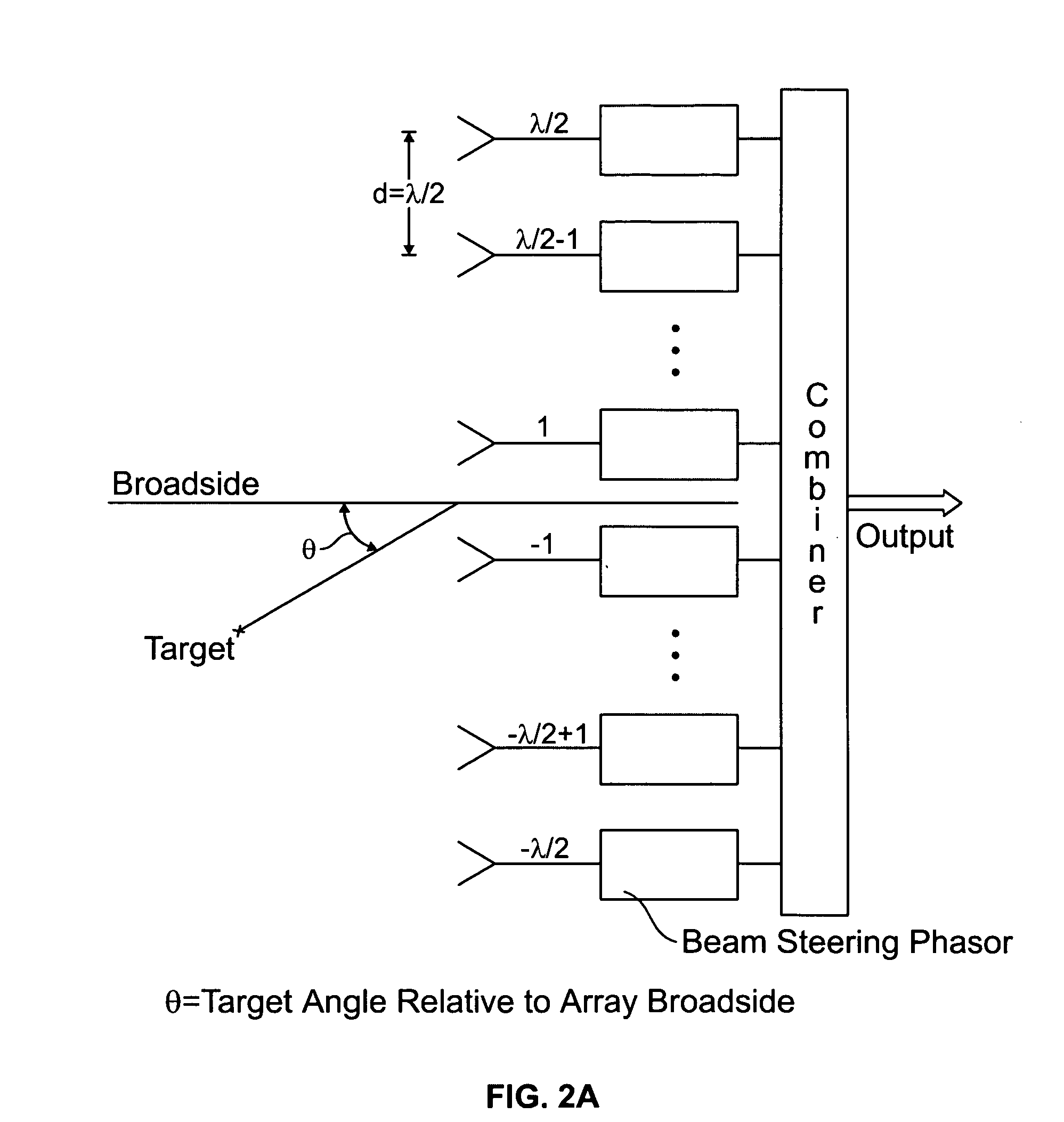Processing architecture for a receiving system with improved directivity and signal to noise ratio
a processing architecture and directivity technology, applied in the field of receiving systems, can solve problems such as inability to resolve interference signals, and achieve the effect of increasing the s/n ratio of the system
- Summary
- Abstract
- Description
- Claims
- Application Information
AI Technical Summary
Benefits of technology
Problems solved by technology
Method used
Image
Examples
Embodiment Construction
Nature of the Software Processing and Performance Impact
[0054] There are several aspects of the present invention specifically directed to improving the signal-to-noise ratio of a received signal beyond what would be predicted by classical information theory. These aspects are important to distinguish.
[0055] Foremost of these aspects is the “offline” processing of stored information. Storage occurs as analog-to-digital conversion is performed resulting in a series of digital representations of the received data.
[0056] Subsequent processing is achieved using modern integrated circuits in an “offline” way that does not adversely affect the bandwidth of the system. Offline processing requires a tolerable transport time delay. As a consequence of the delay, however, “near real-time” performance results. It is this aspect that presents fundamental opportunities over what can be accomplished in conventional real-time processing. Departure from real-time (analog systems) accounts for a...
PUM
 Login to View More
Login to View More Abstract
Description
Claims
Application Information
 Login to View More
Login to View More - R&D
- Intellectual Property
- Life Sciences
- Materials
- Tech Scout
- Unparalleled Data Quality
- Higher Quality Content
- 60% Fewer Hallucinations
Browse by: Latest US Patents, China's latest patents, Technical Efficacy Thesaurus, Application Domain, Technology Topic, Popular Technical Reports.
© 2025 PatSnap. All rights reserved.Legal|Privacy policy|Modern Slavery Act Transparency Statement|Sitemap|About US| Contact US: help@patsnap.com



